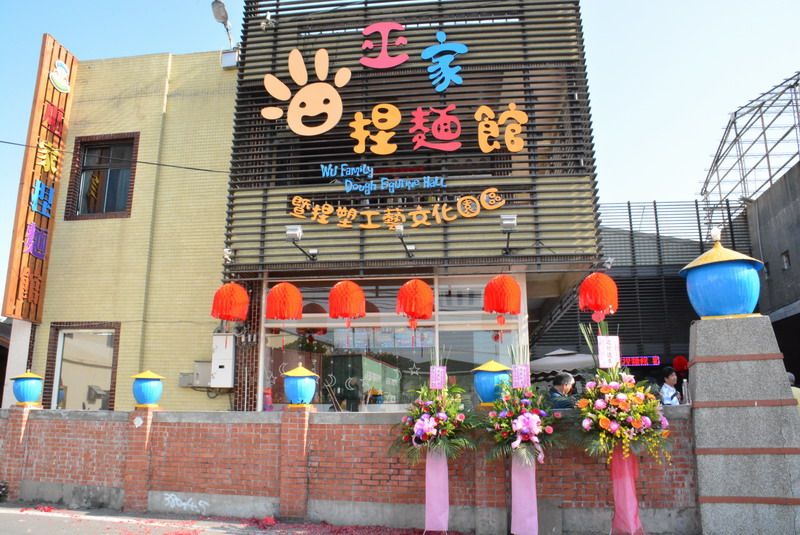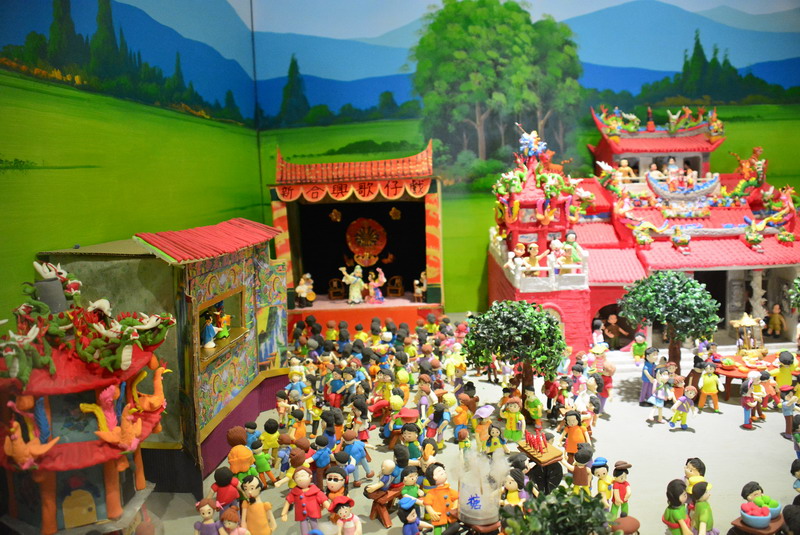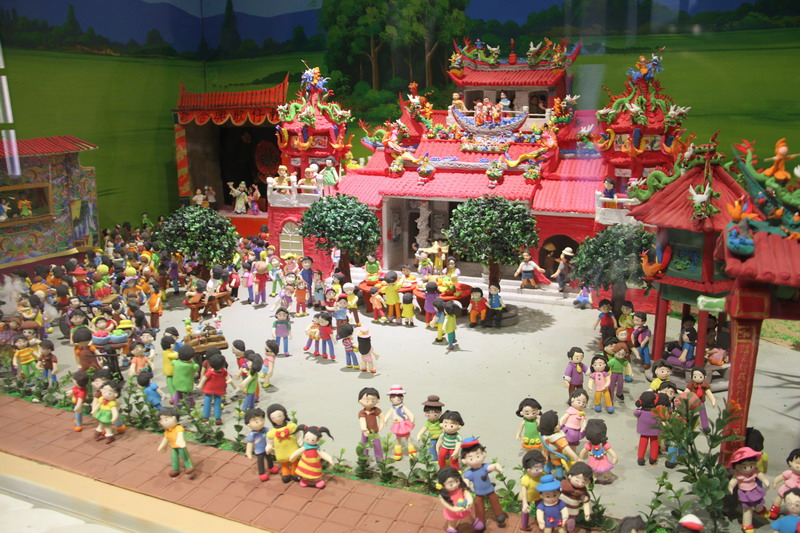Wu Art Museum is the only dough figurine museum in Taiwan, now its tenth year since opening in 2005. Located in Xihu township, Changhua County, Wu Art Museum is run by a peculiar family, each member of which is involved in the same business – the production of dough figurines. To keep the traditional art alive, they make dough figurines for viewing not only by Taiwanese but also by foreigners. Thus, this traditional art has continued to find a place in people’s lives. As Wu Art Museum celebrates its tenth anniversary, the Wu family spends NT$30 million on renovating the building.
Wu Art Museum is in a traditional well-preserved three-section compound, which serves as the main display hall, with additional showrooms for children and modern dough figurine artworks. Besides the static display, the museum also provides interactive artworks that invite viewers to take photos with. They include a giant dough-made photo frame, a super-large pen holder, a lovely wall of Aeolian bells, antique bicycles, and large dough ornaments. They are meant to let visitors understand the beauty of traditional culture through interaction and experiencing the fun of making dough figurines themselves. At one corner of the museum is a coffee shop with great atmosphere, providing coffee and food to dough figurine art-loving visitors.
The museum will hold agriculture-themed exhibitions and serial displays of traditional temple images, using dough figurines to highlight the connections of the Wu family’s creations with the traditional Taoist sacrificial ceremony as well as the ceremony’s significance and role in traditional agricultural society, which found in the ceremony a way to express people’s appreciation of the given food and their respect for the great nature. The cultural heritages of traditional temples developed from the custom, which is fully explained at the museum through dough figurines. Visitors can thus know the origin of their culture once again.

Wu Art Museum is in a traditional well-preserved three-section compound, which serves as the main display hall, with additional showrooms for children and modern dough figurine artworks. Besides the static display, the museum also provides interactive artworks that invite viewers to take photos with. They include a giant dough-made photo frame, a super-large pen holder, a lovely wall of Aeolian bells, antique bicycles, and large dough ornaments. They are meant to let visitors understand the beauty of traditional culture through interaction and experiencing the fun of making dough figurines themselves. At one corner of the museum is a coffee shop with great atmosphere, providing coffee and food to dough figurine art-loving visitors.

The museum will hold agriculture-themed exhibitions and serial displays of traditional temple images, using dough figurines to highlight the connections of the Wu family’s creations with the traditional Taoist sacrificial ceremony as well as the ceremony’s significance and role in traditional agricultural society, which found in the ceremony a way to express people’s appreciation of the given food and their respect for the great nature. The cultural heritages of traditional temples developed from the custom, which is fully explained at the museum through dough figurines. Visitors can thus know the origin of their culture once again.




